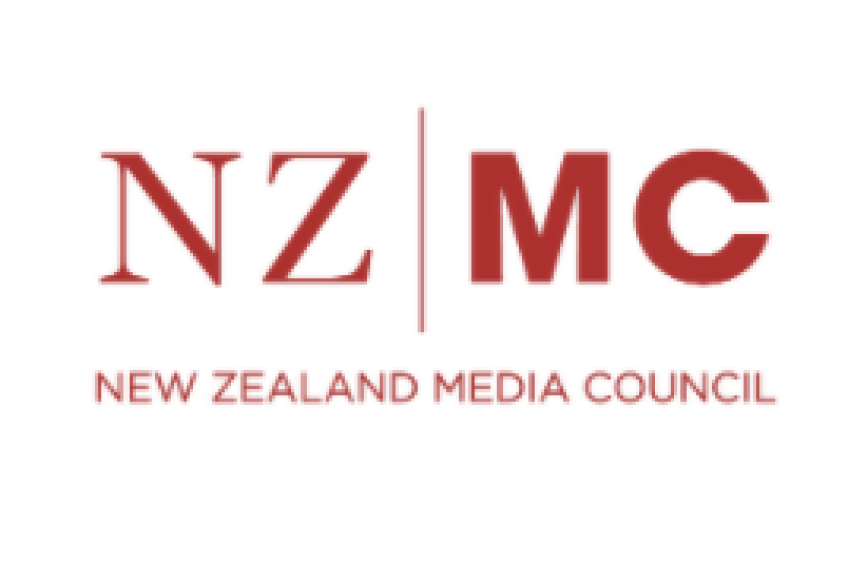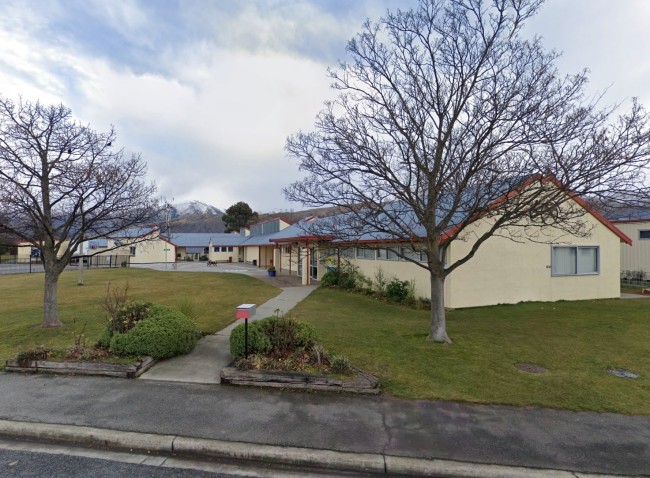
NZ Media Council: QLDC complaint against Crux
The NZ Media Council has released the following ruling on a complaint by the Queenstown Lakes District Council against Crux.

CASE NO: 2891
ADJUDICATION BY THE NEW ZEALAND MEDIA COUNCIL ON THE COMPLAINT OF QUEENSTOWN LAKES DISTRICT COUNCIL AGAINST CRUX
FINDING: UPHELD UNDER PRINCIPLES 1 AND 4
TO BE PUBLISHED ON APRIL 9, 2020
Background
[1] Naell Crosby-Roe, Governance, Engagement & Communications Manager at Queenstown Lakes District Council, has complained about an article published on local news website Crux on February 7, 2020. It was titled ‘Wide body jets for Wanaka referenced in QLDC documents’.
[2] The article discussed a Queenstown Lakes District Council (QLDC) draft business case that says the Queenstown Airport Corporation has advised its intention to upgrade the airport so that it’s able to use wide-body jets. The report says this would require the removal of wastewater facilities, but that the corporation’s intentions had not been confirmed. It was also says the QLDC had claimed the reference was made in error.
[3] Expansion plans at both Queenstown and Wanaka airports have been hotly debated and are ongoing issues in the region.
Complaint
[4] Naell Crosby-Roe, on behalf of the QLDC, says “this is one of many articles Crux has published without checking facts”. They complain under Principle 1 Accuracy, Fairness and Balance that the article lacks balance as the QLDC was not given a right to reply to the claims made in the article and is inaccurate, as it fails to outline the its “true intention”.
[5] The QLDC’s complaint to Crux says the publication acknowledges in the story that the reference to wide body jets was “an error” by the author of the business case, but “only in the third paragraph”. This also fails under Principle 1.
[6] It says any reference wide body jets no longer exists in the working draft and so the article is no more than a “beat up”. “Crux failed to seek any facts or comment from the [QLD] Council” and consequently ran a piece that was “deliberately misleading”.
[7] The QLDC complains that the article fails under Principle 2 to respect the privacy of Queenstown Airport Corporation (QAC) CE Colin Keel and his partner Ian Jackson, who has previously worked in a senior management role at Qantas. In its letter to Crux, the QLDC says the “innuendo” that Keel had a conflict of interest is “offensive”. It fails to respect the privacy Mr Jackson and Mr Keel by inferring Jackson had influence over Queenstown airport decision. It seeks an apology from Crux to them and for running a photo of Jackson with Karen Boult, the wife of mayor Jim Boult.
[8] The complainant also says the article is really an opinion piece but is not clearly labelled as such, which fails under Principles 4 and 5.
[9] Finally, Crosby-Roe complains under Principle 10 Conflicts of Interest that Crux is privately sponsored but does not detail its sponsors or any conflicts of interest. He suggests links to the Wanaka Stakeholders Group and Flightpath 2050.
[10] The complaint also lists complaints under Principle 8 Confidentiality and Principle 12 Corrections but does not offer any concerns pertaining to those.
Editor’s Response
[11] Crux Managing Editor Peter Newport replied, standing by the story and addressing the complaints point-by-point. He finds claims of a ‘beat up’ offensive and inaccurate and while the complaint only relates to the one story, denies the claim Crux has run other inaccurate articles.
[12] Newport says the article did not report that the reference to wide body jets in the draft business case was an error. Instead, the story said “that we understood it was being explained or rationalized as futureproofing or an error”.
[13] He says the QLDC was offered the right of reply, as Crux emailed twice asking for a copy of the business case (January 24 and 29). On January 29 the QLDC replied refusing to reveal the document, saying it was commercially sensitive. That request was the QLDC’s chance to provide balance and the refusal meant Crux was “denied the opportunity to check amendments”. Crux sought comment from the Queenstown Airport Corporation, Newport notes, and their answers appeared in the article.
[14] On the privacy complaint, Newport argues the public interest trumps any question of privacy. As the highest paid CE in the district – on $550,000 – and given he managed an organization 75 percent owned by ratepayers, his actions are of intense interest to the community. The issues of airport expansion and over-tourism were prominent in last year’s local body elections.
[15] As for the photo of Jackson and Boult, Newport says the photo was reproduced with attribution from the social pages of the Lakes Weekly Bulletin. They were clearly happy to have their photo taken.
[16] As for being an opinion piece, Crux has been publishing “issues and action focused public interest journalism pieces for two years”, Newport says. It has been “consistently opinionated in favour of the community”. Its tone is widely understood to reflect Newport’s own views, which is consistent with the Media Council’s “genre” principles allowing for forthright stances and advocacy journalism. The story is factually correct, he says.
[17] Newport says Crux is funded by individuals, including “patron” Dick Hubbard. Much of that is crowd-sourced through Press Patron. It has also had NZ on Air funding. While acknowledging individuals can donate anonymously, Newport has provided letters from the Wanaka Stakeholders Group and Flightpath 2050 denying offering financial support to Crux.
Discussion
[18] The complaint takes Crux to task on a number of fronts and seems to stem from ongoing hostility between the QLDC and the publication and a lack of transparency on both fronts.
[19] The QLDC does not dispute the nub of the story, which is that a draft business case raised the prospect of wide-body jets flying into Wanaka airport and the removal of wastewater facilities. Given the debate around airport expansion, this is clearly a story of significant public interest in the area.
[20 Crux reports this has been explained away as a drafting error but is clearly sceptical of that explanation. Scepticism is core to the business of journalism.
[21] The publication seems to have had only a portion of the draft business case, so quite rightly sought a full copy. The transparent release of the business case would have avoided a story of this kind and revealed the QLDC’s “true intentions”, but without more information we are unable to comment on whether or not that was a reasonable expectation.
[22] However, the problem comes in Crux’s cursory and opaque efforts to seek information about the report, a portion of which had clearly been leaked to it. While it sought the official report, it didn’t ask the QLDC any questions about the key portion it had seen. So the article reveals plans for wide-body jets, implies the QLDC is making excuses to cover this revelation and reports its refusal to release the document, without offering a right of reply. The article also fails to name a single source raising concerns about the draft, even an anonymous one. It simply says it “understands” the reference to wide-body jets caused some alarm and that new councilors are “understood” to be concerned about a lack of transparency.
[23] The QLDC’s apparent secrecy is no excuse for Crux not to give it every opportunity to comment on the claims regarding Wanaka airport and whether or not the wide-body jets reference – which is of such public interest – was made in error. Simply put, Crux should have sought comment on the key portion of the report. From the information provided it is impossible to tell if the story is accurate or not – something that might have given Crux pause before publishing – but it certainly lacks balance.
[24] Crux’s claims of a conflict of interest involving QAC chief executive Colin Keel draw a long bow and, crucially, offer no example of where that conflict can be shown. However Newport is correct that a high paid leader of a majority-public-owned organization should expect extensive scrutiny on behalf of ratepayers. An executive’s personal relationship may well present a conflict of interest and so raising the issue does not amount to a breach of privacy. Readers can see for themselves that no evidence of a conflict has been reported.
[25] As for the photo of Jackson and Boult, they have clearly posed for a picture at a public event. Again, there is no breach of privacy.
[26] As for the funding of Crux, the complainant offers no evidence of funding that would amount to a conflict of interest. Rather, much like Crux with its reporting on Keel and Jackson, it raises the issue without anything to back it up.
[27] Finally, the question over whether this article is reportage or opinion is difficult to answer. It sits in what calls itself a “local news site”, with no labels to indicate it is anything other than a news piece. However Newport himself says Crux is “consistently opinionated in favour of the community”, seemingly acknowledging this is not a standard news item. He points to the Media Council’s preamble allowing for advocacy journalism. It’s true the Media Council’s principles make room for a range of journalistic styles. However, this article presents as a news story and yet opinion intrudes on multiple occasions. Readers will be perplexed as to whether this article is a work of fact or comment; it reads as a collision of both without clear labelling.
Decision
[28] The complaint is not upheld under Principle 2 Privacy, Principle 5 Columns, Blogs, Opinions and Letters or Principle 10 Conflicts of Interest.
[29] Under Principle 1 Accuracy Fairness and Balance and Principle 4 Comment and Fact, the complaint is upheld.





























